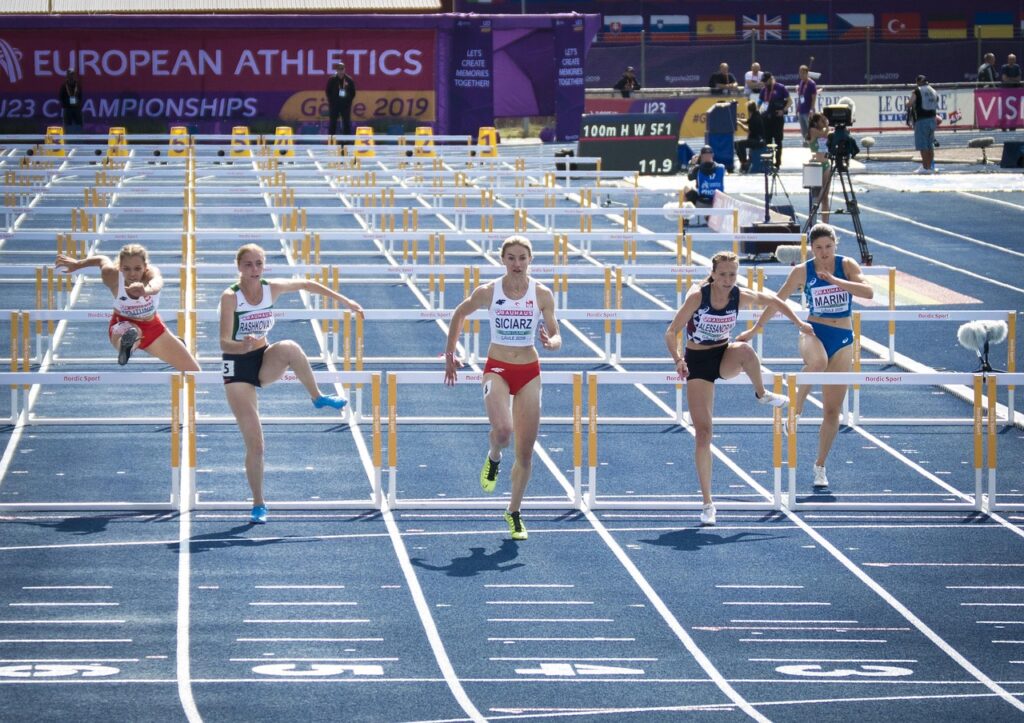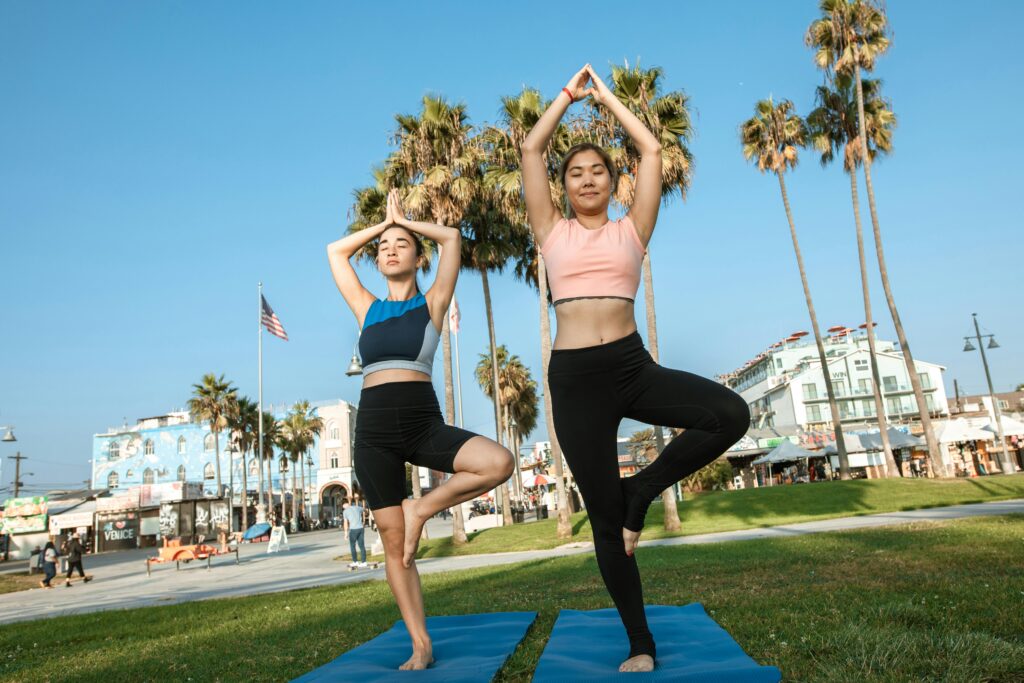Introduction
Training for a race, perfecting a tennis serve, pushing through strength workouts—athletes know the rush of pushing physical limits. Mindfulness for athletes offers an unexpected edge: greater focus, faster recovery, and resilience under pressure. Yet, paradoxically, pausing to notice your breath or body sensations can feel like hitting the brakes on hard-earned momentum. In this deep-dive post, we’ll explore both the empowering and frustrating sides of integrating mindfulness into athletic training. Through real-life stories, practical techniques, and clear answers to common questions, you’ll discover how to harness the mind-body connection to boost performance—without sacrificing your competitive drive.
1. Why Athletes Need Mindfulness

- Performance Pressure: From local meets to national championships, the weight of expectations can disrupt focus and trigger anxiety.
- Overtraining Risks: Ignoring subtle signs of fatigue can lead to injury or burnout.
- Mental Fatigue: Constantly strategizing, visualizing, and analyzing technique strains cognitive resources.
- Emotional Swings: Wins can bring overconfidence; losses can spark self-doubt—both harmful to consistent performance.
Positive Aspect: Mindfulness trains athletes to notice early stress or tension, allowing timely adjustment.
Negative Aspect: Stall in practice rhythm—especially during drills—can feel like lost training time.
2. Understanding Mindfulness for Athletes

Mindfulness for athletes means bringing full, nonjudgmental awareness to the present moment—whether you’re halfway through a 5K, in the final set of a match, or resting between reps. It involves:
- Body Awareness: Recognizing muscle tightness, breath patterns, and posture in real time.
- Emotional Awareness: Noticing frustration or self-criticism without letting it hijack performance.
- Attentional Control: Shifting between wide awareness (environment, opponents) and narrow focus (ball, muscle group) as needed.
3. Benefits of Mindfulness in Sports
3.1 Enhanced Focus Under Pressure

- Example: Olympic swimmer Maya incorporated a three-second breath ritual before each race start. By cueing her mind to the here-and-now, she reduced pre-race jitters and improved her reaction time off the blocks.
3.2 Faster Recovery and Injury Prevention
- Example: Marathoner Sameer used a nightly body-scan meditation to detect early signs of muscle soreness. When he noticed tight calves, he prioritized rest and foam-rolling—avoiding a calf strain that had sidelined him the previous season.
3.3 Improved Emotional Regulation
- Example: Tennis pro Aisha practiced labeling emotions (“I notice frustration”) during matches. This simple act prevented her from chasing every loose ball in the air, conserving energy for crucial points.
3.4 Increased Resilience and Motivation
- Athletes who observe setbacks—missed lifts, lost points—without harsh self-judgment bounce back more quickly, maintaining consistent training momentum.
4. When Mindfulness Feels Counterintuitive in Training
- Interrupting Flow: Pausing mid-drill for breath awareness can feel like losing rhythm.
- Over-Analysis: Hyper-awareness of form can lead to “paralysis by analysis,” where you second-guess every movement.
- Time Constraints: In tightly scheduled team practices, finding space for mindfulness may seem impossible.
Real-Life Slip-Up: Basketball guard Neil tried a 10-minute guided session before game day. The result? He arrived to the gym more nervous, overthinking free-throw mechanics instead of relying on muscle memory.
Key Insight: Mindfulness for athletes works best when micro-practices are timed to natural breaks—timeouts, between sets, or pre-race warm-ups.
According to pubmed.ncbi.nlm.nih.gov mindfulness improves mental health, reduce injury risk, and perhaps even facilitate recovery from injury.
5. Practical Mindfulness Techniques for Athletes
5.1 The “Breath Anchor” Before Competition
- How to Do It: In the moments before a start signal, take three slow, deliberate breaths—feeling the air fill and empty your lungs.
- Why It Works: It grounds attention away from distractions (crowd noise, internal doubts) and primes your body for peak action.
5.2 Micro Body Scan Between Sets
- How to Do It: During rest intervals—such as between weightlifting sets—close your eyes briefly and scan from head to toe, softening any tension.
- Why It Works: Promotes quicker physiological recovery by activating the parasympathetic (“rest and digest”) system.
5.3 Mindful Movement Drills
- How to Do It: In warm-ups or drills, focus on one aspect—foot strike in running, grip pressure in racket sports. Notice sensations and adjust subtly.
- Why It Works: Builds body-mind feedback loops, refining technique organically rather than through forceful correction.
5.4 Visualization with Sensory Detail
- How to Do It: Before key events, visualize success—not just outcomes but sensory elements: the roar of the crowd, feel of the turf, muscle effort.
- Why It Works: Activates neural pathways similar to actual performance, enhancing confidence and motor readiness.
5.5 Post-Training Gratitude Pause
- How to Do It: After practice, spend 60 seconds reflecting on one positive moment: a strong sprint, a well-executed play, supportive teammates.
- Why It Works: Counters negativity bias, reinforcing motivation and mental well-being.
6. Integrating Mindfulness into Athletic Routines
- Anchor to Equipment Use: Tie a micro-practice to routine actions—strapping on cleats, chalking hands, or taping wrists.
- Use Environmental Cues: Let the stopwatch beep, the coach’s whistle, or the end-of-lap bell prompt a mindful breath.
- Team Adoption: Propose a brief group breathing break after each quarter or before sprint intervals—enhancing team cohesion.
- Track Progress: Keep a simple log: note which micro-practice you used, when, and any shifts in focus or recovery.
7. Real-Life Athlete Stories
- Soccer Midfielder’s Breakthrough: Priya, juggling part-time work and semi-pro soccer, found herself mentally exhausted by halftime. By introducing a two-breath reset at halftime using a small wristband reminder, she returned to the second half with clearer decision-making, assisting two goals.
- Climber’s Calm: Aditya faced paralyzing fear on exposed faces. He learned a fingertip-counting breath exercise (“inhale four counts, exhale four counts”) before each move—allowing him to trust his gear and body, conquering routes he once feared.
Q&A Section
- Q: How do I fit mindfulness into high-intensity interval training (HIIT)?
A: Use rest periods: take three conscious breaths before starting the next interval—maximizing recovery without extending session length. - Q: Can mindfulness reduce performance anxiety?
A: Yes—by anchoring attention to breath or body sensations, you interrupt the “what-if” chatter, helping you enter competition with calm readiness. - Q: What if paying attention to sensations makes me notice pain?
A: Differentiate discomfort from harmful pain. Use brief body scans to detect real injury signals early—but avoid rumination on every niggle. Address serious issues with a medical professional. - Q: How often should I practice mindfulness?
A: Aim for micro-practices at least 3–5 times per training session—during warm-up, between sets, and post-workout cooldown. - Q: Can teams benefit from group mindfulness?
A: Absolutely. Shared breathing breaks or visualization sessions foster unity, improve communication, and create a collective calm before high-pressure plays.
FAQ Section
- Do I need a meditation app or coach?
No—micro-practices can be self-guided. Apps add convenience but aren’t mandatory. - Will mindfulness slow down my training progress?
On the contrary—short pauses often enhance recovery and focus, accelerating skill acquisition over time. - Can mindfulness prevent injuries?
By heightening body awareness, you catch overuse signs early—reducing risk of strain or chronic injury. - Is mindfulness suitable for all sports?
Yes—from endurance sports (running, cycling) to precision tasks (archery, shooting) and team games. - How quickly will I notice benefits?
Some focus improvements appear immediately; deeper resilience and recovery gains build over weeks of consistent micro-practices.
Friendly Closing Message
Mindfulness for athletes isn’t a luxury—it’s a performance multiplier that deepens your connection to both mind and body. By weaving in brief, context-friendly practices—whether it’s a two-breath race start ritual, a micro body scan between sets, or a post-training gratitude pause—you’ll sharpen focus, speed recovery, and sustain the mental edge that sets champions apart. Start small: pick one technique above, weave it into your next workout, and notice how mindful moments elevate every stride, serve, and sprint. Here’s to training with presence—and winning with heart! 🏃♀️🏅🧘♂️

Pingback: Mindfulness for Call Center Employees: How It Transforms Customer Interactions (Yet Sometimes Highlights Your Own Stress) - Calm Within Minutes
Pingback: Mindfulness for Writers: How It Ignites Creativity (Yet Sometimes Hinders Your Flow) - Calm Within Minutes
Pingback: Mindfulness for Lawyers: How It Strengthens Your Advocacy (Yet Sometimes Stirs Deeper Stress) - Calm Within Minutes
Pingback: Mindful Recovery Routines: How They Speed Up Your Healing (Yet Can Feel Like Extra Work) - Calm Within Minutes